One of the most famous Romantic buildings can be found in the south of Germany.
In this post, you’ll discover the ultimate list of facts about Neuschwanstein Castle, a magical building with an interesting story to tell.
1. It’s located in a small Bavarian town named Schwangau
What are the odds of one of the most fabulous castles in the world being located in one of the most picturesque villages in the world, right?
Well, Neuschwanstein Castle is located in Schwangau and this village definitely qualifies to be called this way. it’s located at an elevation of about 800 meters (2,620 feet) in the southwest of the German state of Bavaria, all the way in the south of the country.
The area looks stunning as it forms a transition between the Alpine foothills to the south and a hilly landscape that looks equally amazing to the north.

2. It was commissioned by the King of Bavaria
The Castle was commissioned by King Ludwig II of Bavaria, who was born in 1845 and came to power in the year 1864. Neuschwanstein Castle would become the first in a series of castles he commissioned.
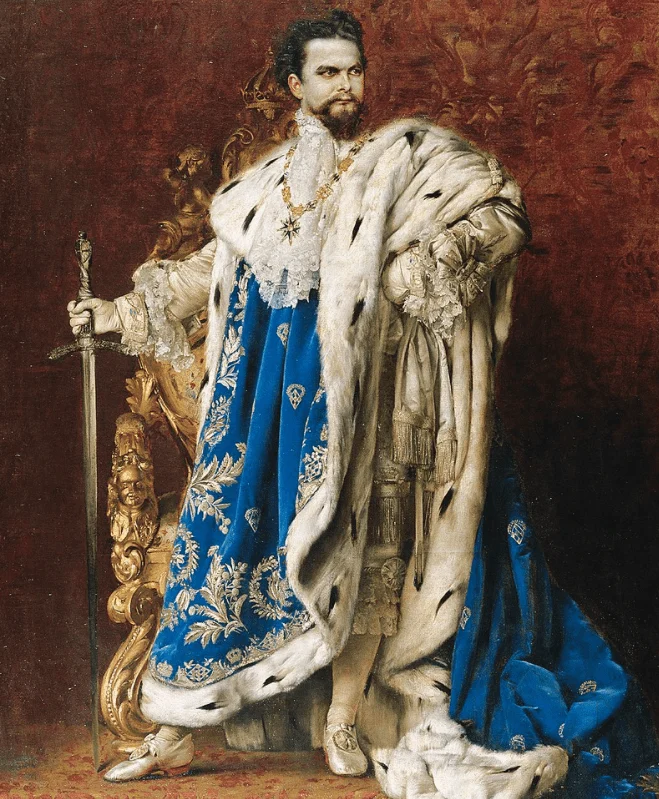
3. There used to be 3 medieval castles in the area
One of the most remarkable facts about Neuschwanstein Castle is that a total of 3 castles were overlooking the village in the Middle Ages. There were referred to as Schwanstein Castle, Vorderhohenschwangau Castle, and Hinterhohenschwangau Castle.
The latter two were twin castles that sat on a cliff and overlooked Schwanstein Castle and not much more than ruins remained of these in the 19th century.
4. It didn’t replace the old Schwanstein Castle
Another one of those fascinating facts about Neuschwanstein Castle is that it didn’t replace the old Schwanstein Castle, but rather the twin castles overlooking it.

The old Schwanstein Castle was rebuilt by Ludwig’s father, King Maximilian II of Bavaria, who bought it in 1832 and built a neo-Gothic style castle in its place which was completed in 1837.
This castle is now known as “Hohenschwangau Castle” and was the summer residence of the royal family of Bavaria. It’s here that Ludwig got the idea to build Neuschwanstein Castle on top of the medieval ruins of the twin castle.
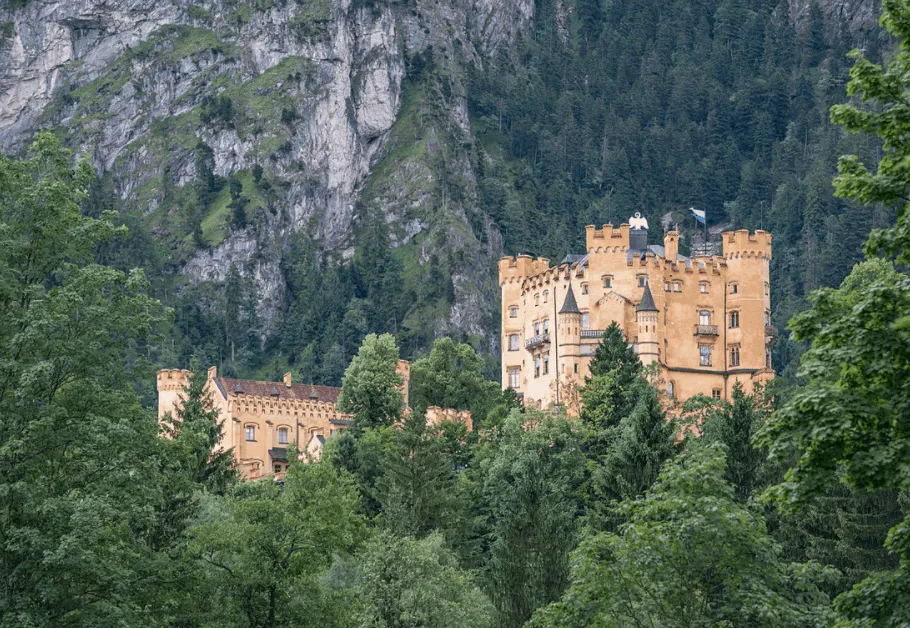
5. Ludwig II got his inspiration from a couple of other castles
Ludwig started drawing his own version of the castle he wanted to build in the year 1859. His real inspiration would come much later and just before construction started.
In 1867, he traveled to Wartburg Castle near Eisenbach in central Germany, a rebuilt medieval castle which is also located on a hill. His next journey was to the Château de Pierrefonds in the Picardy region of France.
The castle in France was under restoration in this period and features a similar Romanesque style, clearly proving it inspired Ludwig with his own design.

6. The castle was built using several different architectural styles
Neuschwanstein Castle is a Romantic building that features a combination of Romanesque, Gothic, and Byzantine styles which were all mingled with the typical nineteenth-century architecture.
Ludwig had a big stake in the design of the castle and several drawings were made which didn’t meet his standard. It wasn’t until 1869, just before construction started, that Christian Jank drew the final version of the castle’s design.
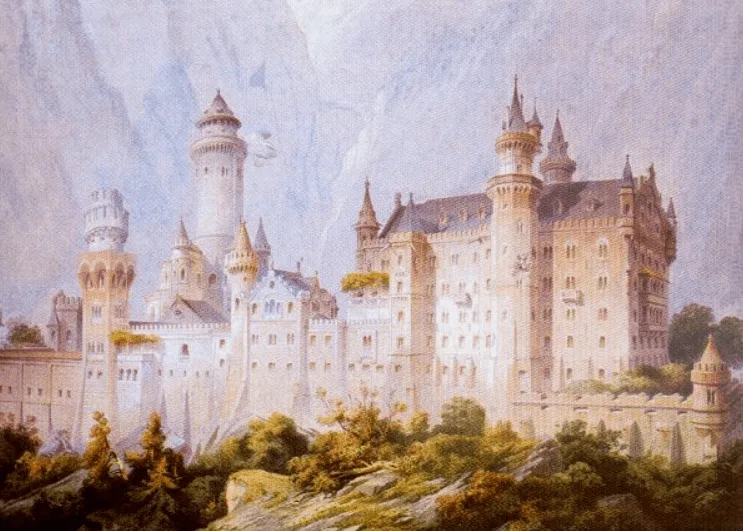
7. It took over 15 years to build Neuschwanstein Castle
It was impossible to remodel the old ruins of the twin medieval castles, so they were completely demolished in 1868. It wasn’t until September 5, 1869, though, that the first stone was laid.
One of the most astounding facts about Neuschwanstein Castle is that it took over 15 years to construct, and was way from finished by then. It only allowed the king to live in his own private quarters without any space for the court.
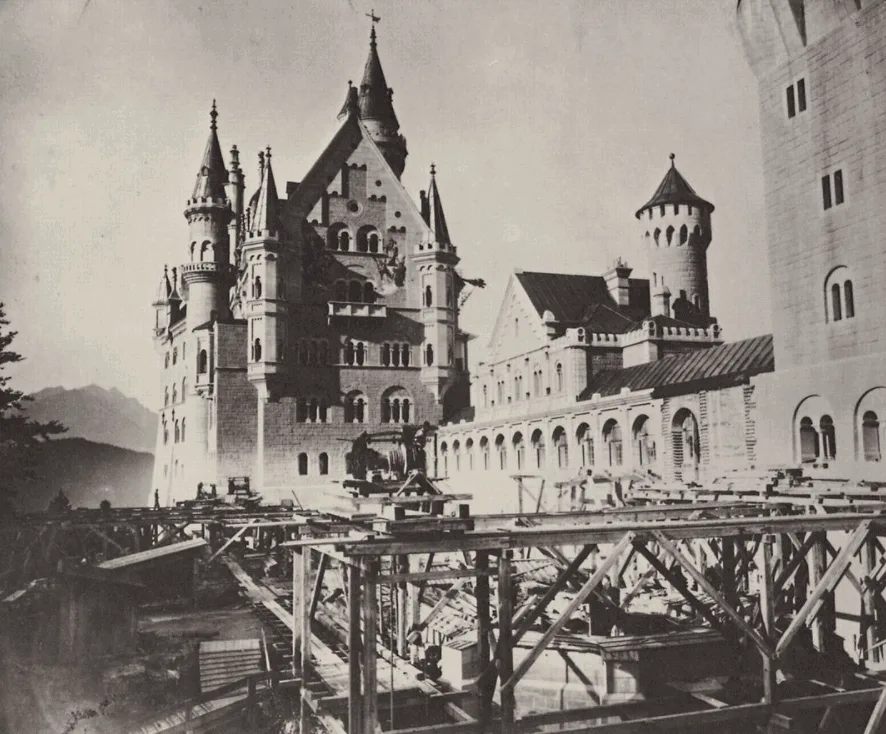
8. Building the castle was a massive endeavor
Building this immense castle on top of a hill was a huge endeavor. The castle was first completed with bricks and then decorated with white limestone.
Architect Eduard Riedel had a complicated job as an account from statistics of the years 1879 and 1880 show how massive the project really was:
- 465 tonnes (513 short tons) of Salzburg marble.
- 1,550 tonnes (1,710 short tons) of sandstone.
- 400,000 bricks.
- 2,050 cubic meters (2,680 cubic yards) of wood for the scaffolding.
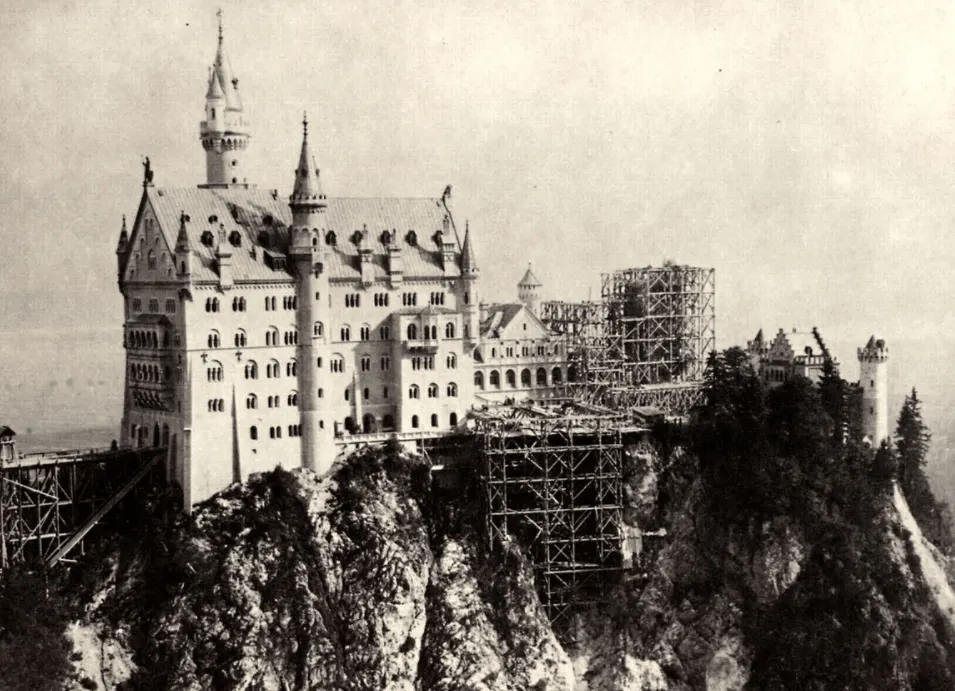
9. The King had an expensive taste and various other projects
While the construction of Neuschwanstein Castle was underway, Ludwig started a couple of more projects as well. These included the rococo-style building of Linderhof Palace and the Baroque structures of Herrenchiemsee.
Only the smallest of his project, the one at Linderhof Palace, would be completed during his lifetime, while the other two remain unfinished.
His Baroque palace was inspired by a visit to the famous Palace of Versailles near Paris. This is emphasized by the fact that he integrated a similar “Hall of Mirrors” into it and copied multiple other design features such as fountains in its garden.
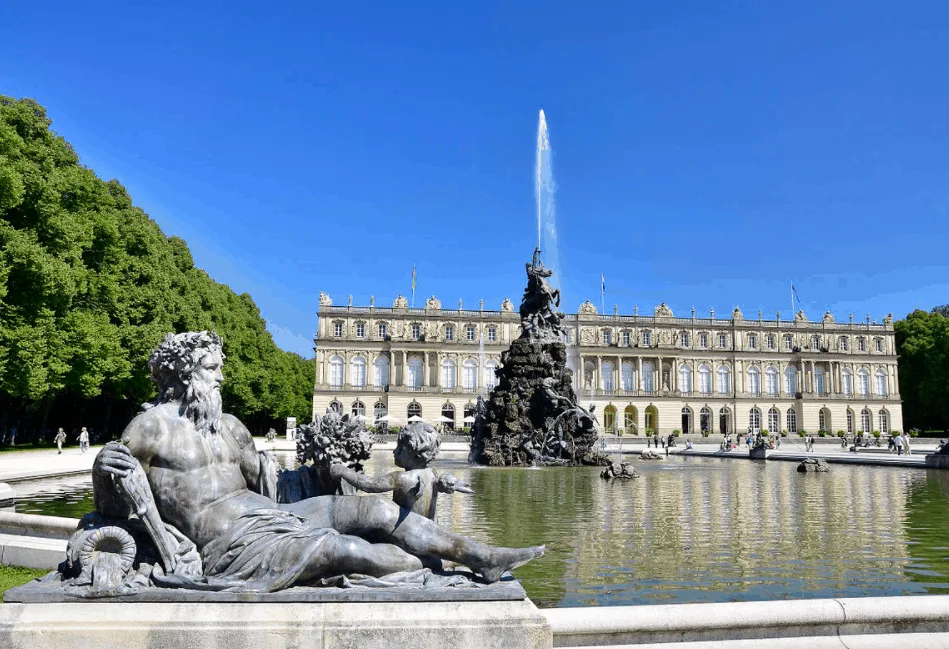
10. Ludwig’s debt reached 14 million marks at one point
One of the most intriguing facts about Neuschwanstein Castle is that all these projects weren’t funded by the state, but by King Ludwig II’s personal finances.
By the time the project was nearly completed, the original budget had nearly doubled from an estimated 3.2 million marks to nearly 6.2 million marks, which is the equivalent of nearly 50 million € today!
The King acquired more and more loans, increasing his overall debt to about 14 million marks, something that didn’t urge him to stop his expensive building projects.
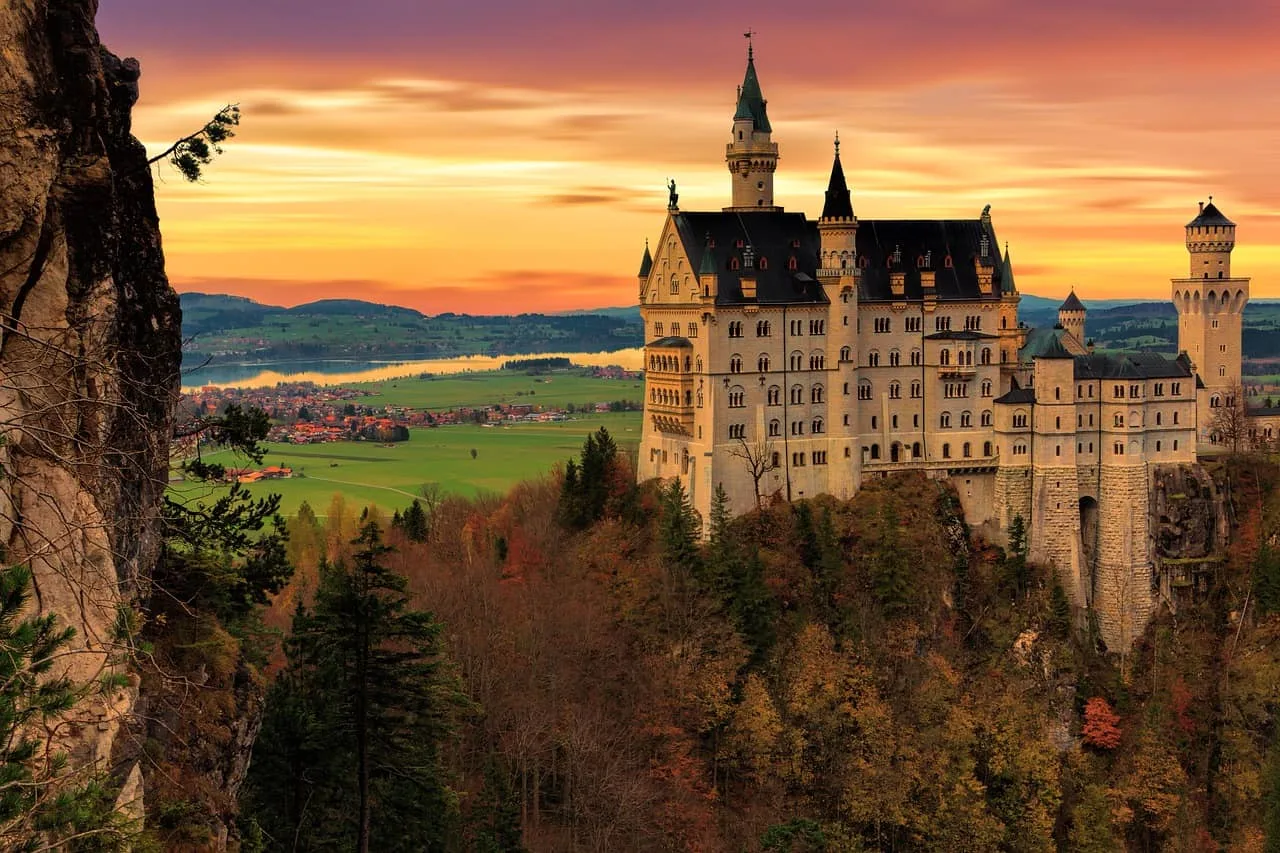
11. The King only lived in the castle for less than 6 months
One of the most tragic facts about Neuschwanstein Castle is that after a construction period of nearly 2 decades, King Ludwig II was only able to live in his castle for a grand total of 172 days and only slept there for just 11 days.
Ludwig II died under mysterious circumstances together with his supervisor on June 13, 1886. Both the men’s bodies were found lying in the shallow water of Lake Starnberg near Berg Castle.
The official report stated the cause of death as suicide, which almost certainly didn’t happen.

12. Just 6 weeks after the King had died, the castle was opened to the public
King Ludwig II solely built Neuschwanstein for it to be used as his own private residence. He never intended it to be opened to the public.
Just 6 weeks after his mysterious death, the castle was opened to paying visitors, and the construction was completed in a simplified version. This was an excellent move because his debt was cleared by the year 1899!

13. Neuschwanstein Castle instantly became a popular tourist attraction
One of the most surprising facts about Neuschwanstein Castle wasn’t just that it became an instant hit and hundreds of people wanted to take a peek inside every single day. It’s the fact that the huge debt created by Ludwig II actually benefited the reigning dynasty, the House of Wittelsbach, tremendously the decade before World War I.
All the properties he built, including his massive Baroque palace, became popular tourist attractions and the main source of income for the Bavarian government back then!

14. The Nazis used the castle to store looted art and it was almost blown up
While the castle turned tourist attraction got a break during World War I, things picked right back up after the war was over. By the year 1939, it’s estimated that about 200,000 people visited the castle every year.
The castle was seized by the Nazis during World War II and used as a storage space for the huge number of works of art that they were looting during the war.
When the war reached its conclusion, the SS even had plans to blow up the castle along with all the art, but luckily this didn’t happen and the castle was surrendered without damage.
39 photo albums containing pictures of the art stored at the castle were retrieved and used at the Nuremberg trials to prove the extent of the Nazi plunder.
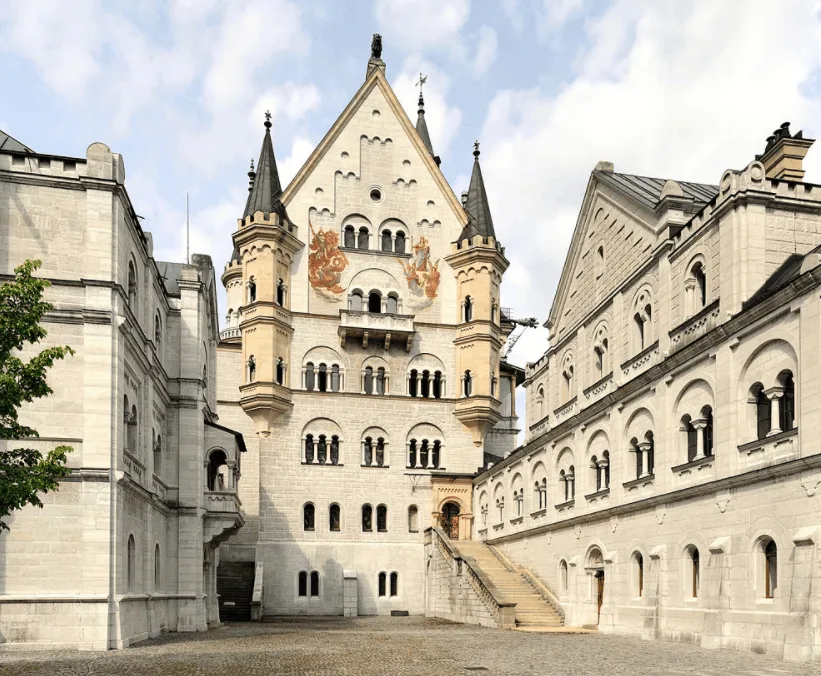
15. The castle consists of numerous buildings which run all across the cliff
The castle consists of several separate buildings that were built right on top of the cliff where the two medieval castles used to be located. The length of all the buildings is about 150 meters (492 feet).
There’s an open space that was intended to be occupied by a large church, but this building was never constructed.

16. Only 15 of the intended 200 rooms and halls were finished
The total floor space of the castle amounts to about 6,000 square meters (65,000 square feet), but this was supposed to be a whole lot more.
Only 15 of the 200 intended rooms and halls were constructed. The original plan had numerous other buildings included for guests and servants but these were also never constructed after the King’s death.
17. The interior of Neuschwanstein Castle is magnificent
One of the most stunning facts about Neuschwanstein Castle is that the interior of the castle is equally impressive as the exterior. The interior rooms integrate the magnificent Byzantine architectural style.
Neuschwanstein Castle Throne Hall
The throne hall, which measures 20 by 12 meters (66 by 39 feet) and has a height of 13 meters (43 feet), is an absolute masterpiece. It covers both the 3rd and 4th floors of the castle.
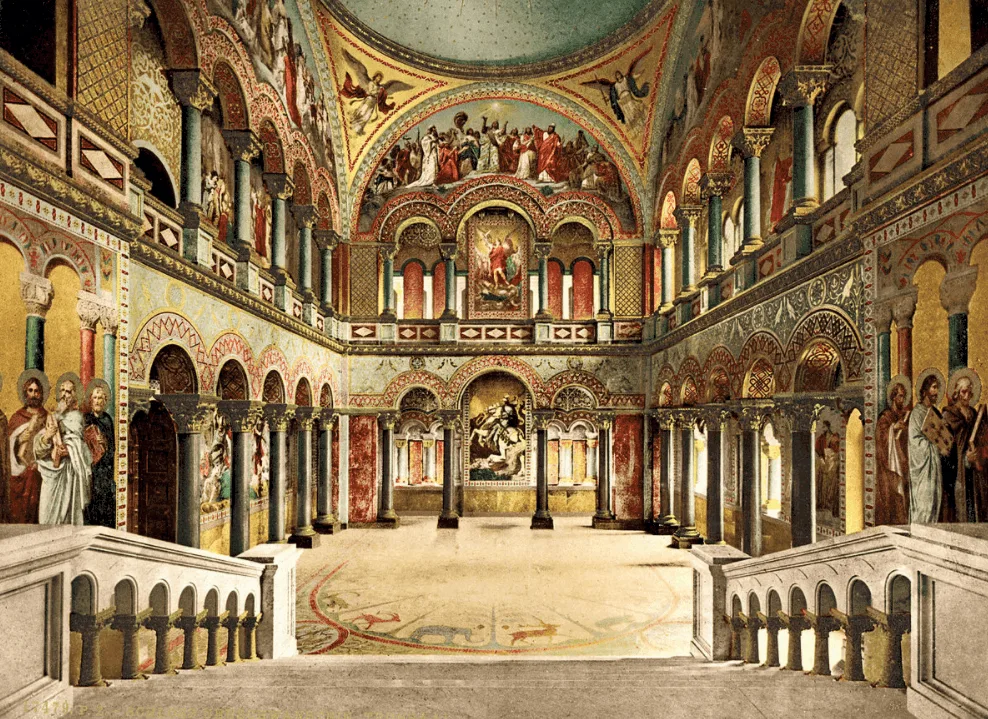
Neuschwanstein Castle Bedroom
The King only spent 11 nights in the bedroom of the castle, which is also elaborately decorated.

Neuschwanstein Castle drawing room
The drawing room with its magnificent arches and pillars is also a highlight of the castle’s interior.
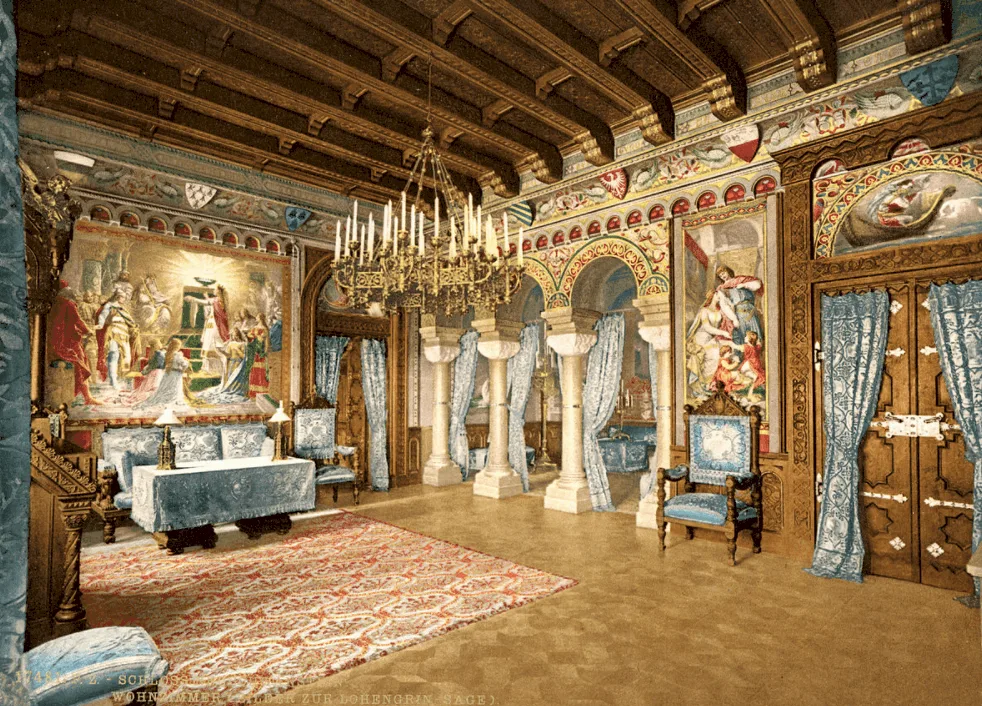
Neuschwanstein Castle Hall of Singers
The largest room inside the castle is the Hall of Singers which measures 27 by 10 meters (89 by 33 feet) and was one of the favorite projects of the King in the castle.
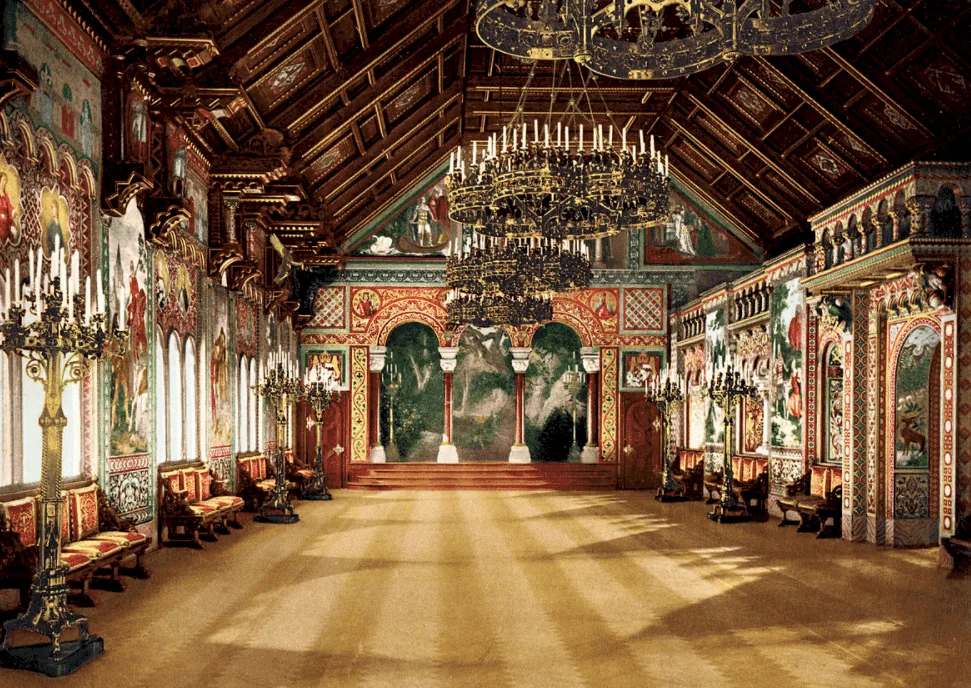
18. It was the inspiration of a famous fairy tale castle
Did you notice yet? The castle looks amazingly familiar to the fairy tale castle at the center of Disneyland, right?
That’s because the Castle of the Sleeping Beauty was inspired by Neuschwanstein Castle!
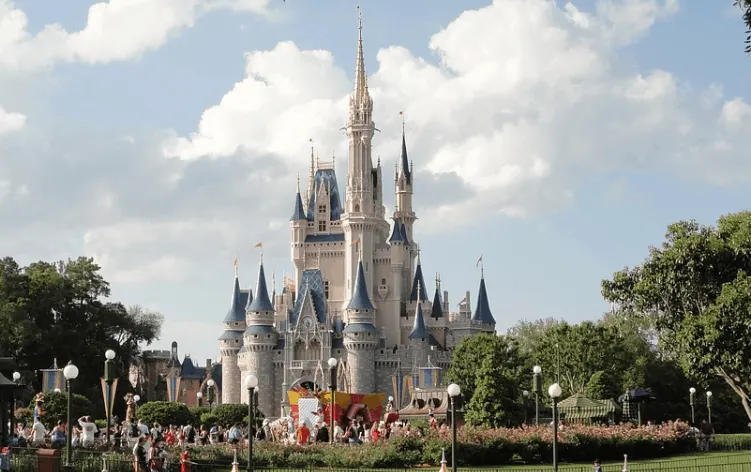
19. It’s one of the most popular tourist attractions in Europe
The castle has never lost its appeal as a tourist attraction ever since it opened its doors to the public back in 1886. In fact, it’s even way more popular now than back then!
An estimated 1.5 million people visit the castle every year, sometimes resulting in lines of a few hours to get in for visitors without advance reservations. Therefore, visitors are only allowed to enter the castle on guided tours which last about 35 minutes.

